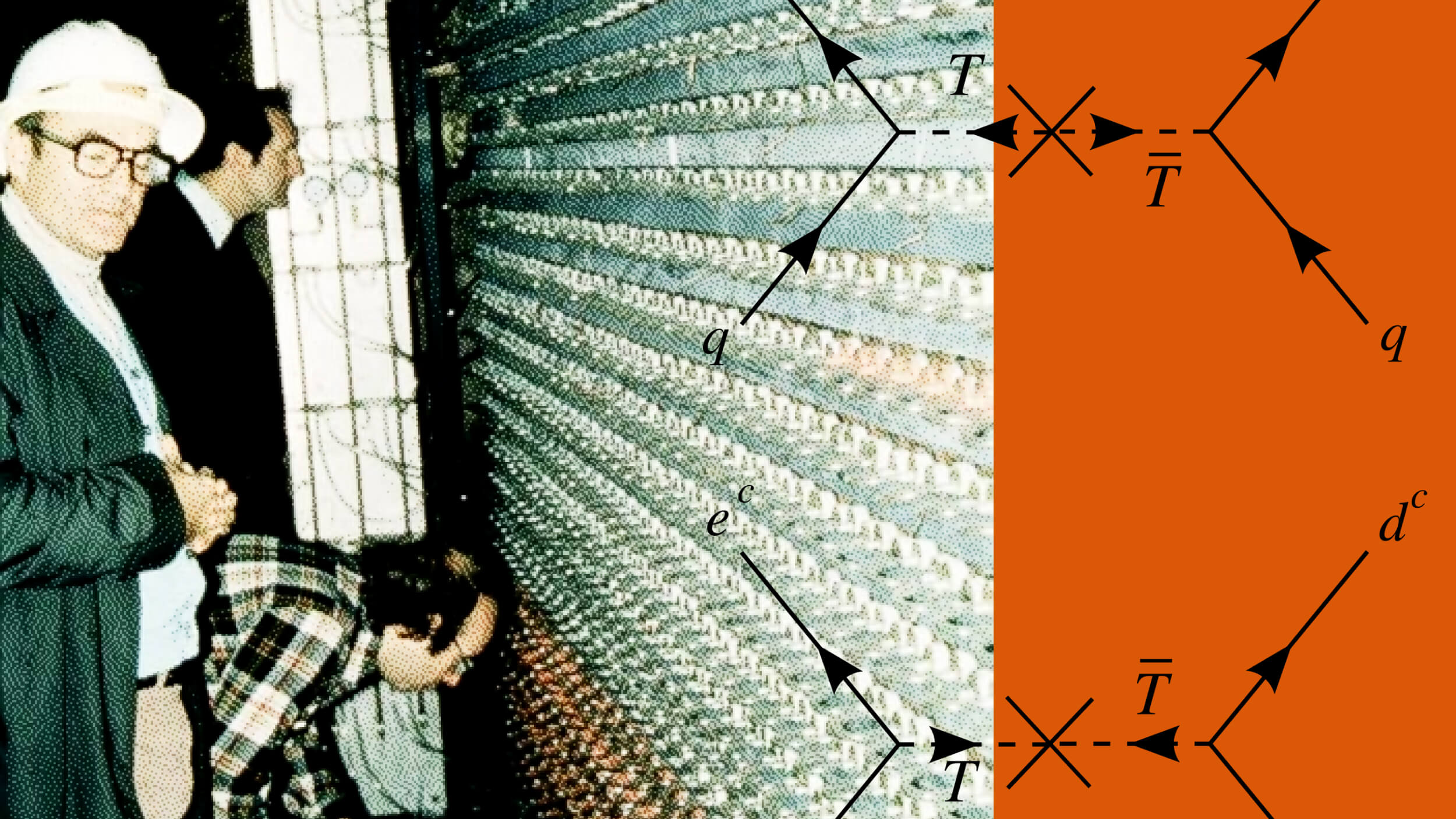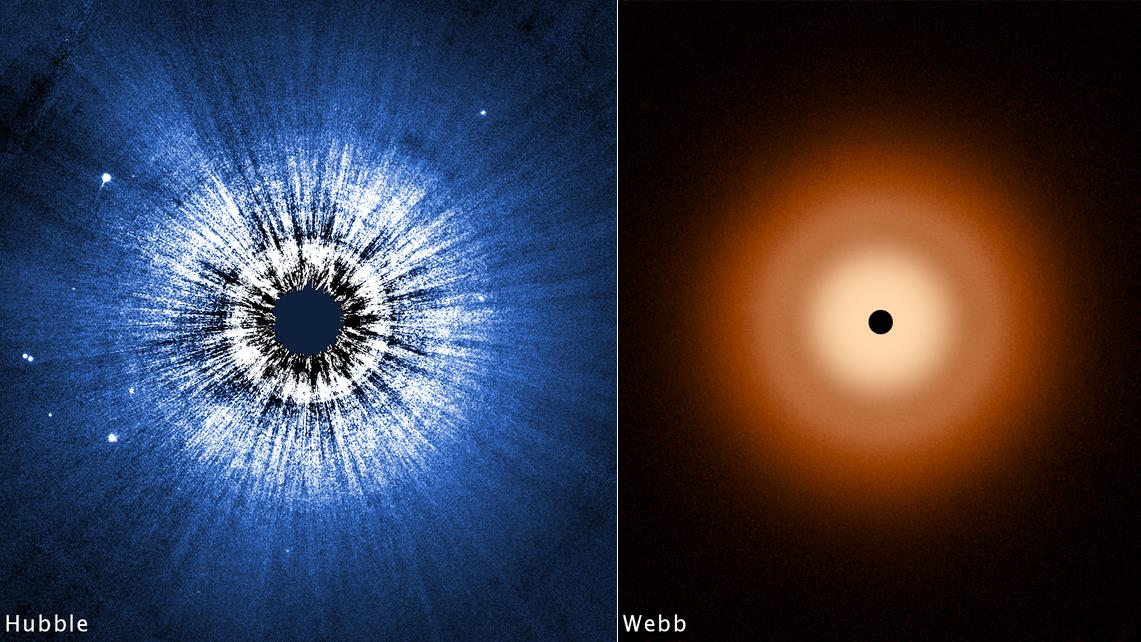How far away are the stars?

Scientists still don’t know, but the answer could hold the key to the expanding, accelerating Universe.
“Scratch a cynic and you’ll find a disappointed idealist.” –Jon F. Merz
When you look up at the night sky and see the glittering stars overhead, your first thought might be to wonder what, exactly, they are. Once you know they’re very distant suns, however, with different masses, brightnesses, temperatures and colors, your next thought might be to wonder just how far away they are. It might surprise you to learn that despite centuries of advancement in astronomy and astrophysics, from telescopes to cameras to CCDs to observatories in space, we still don’t have a satisfying answer. When you consider that much of our understanding of the Universe today — how it was born, how it came to be the way it is and what it’s made of — is based on the distances to the stars, it highlights just how important this problem is.
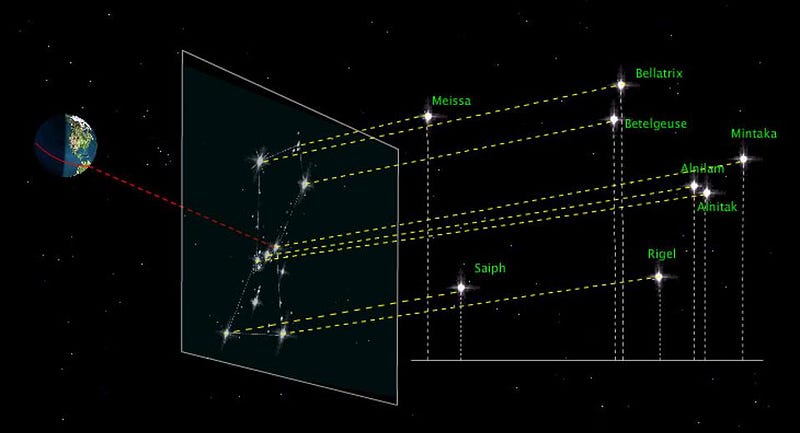
If you want to know how fast the Universe is expanding at any point in time, you need to know how fast the distant galaxies are moving away from us and how far away they are. Measuring a galaxy’s recession speed is straightforward — just measure its redshift and you’re done — but distances are a tricky thing. There needs to be some type of relationship between a quantity you can measure, like observed brightness, angular size, periodicity of a particular signal, etc., and something that will tell you an object’s intrinsic brightness or size. You can then calculate its distance. That’s how we figure out a whole slew of properties about the Universe, including:
- how fast it’s expanding today,
- how the expansion rate has changed over time,
- and what makes up the Universe, including matter, radiation and dark energy.
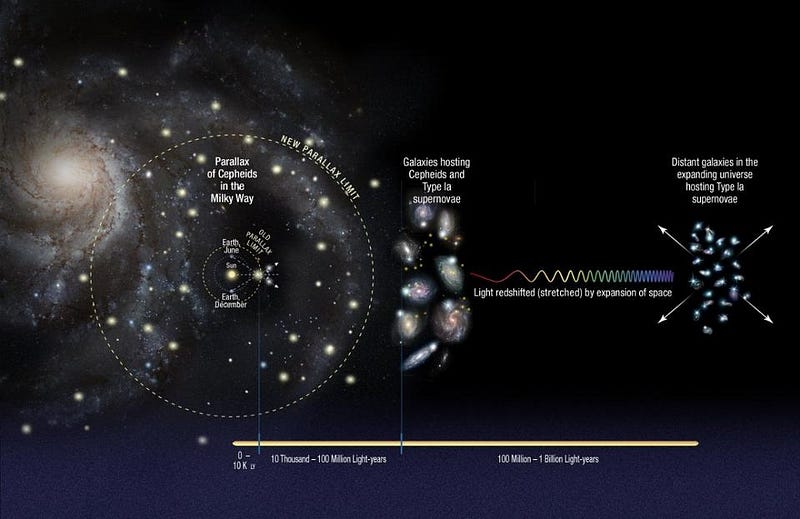
But all of that knowledge requires a starting point for measuring cosmic distances. All of our measurement methods are dependent on knowing how these objects we’re measuring operate nearby: they all require an understanding of the closer star or galaxy types that we also find at great distances. No matter how you go about it, there’s one key step we need to begin with, and that’s an assumption-free method to measure the distances to the nearest stars. We only know of one, and we’ve known of it since before the time of Galileo.
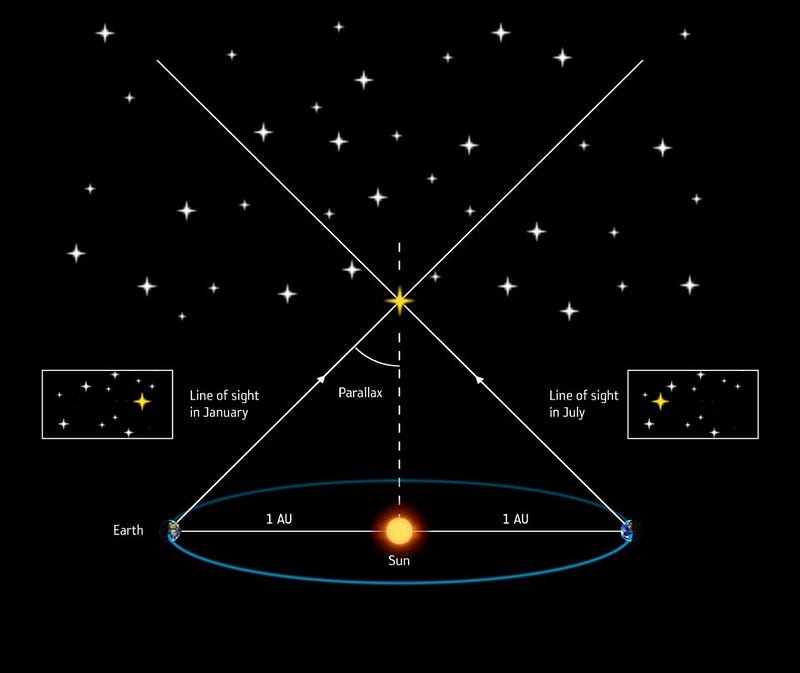
It’s the idea of parallax, which is a purely geometrical way to measure the distances to the stars. Regardless of what type of star you have, what its brightness is or how it’s moving through space, measuring parallax is exactly the same.
- Measure the star you’re trying to observe today from your location, at its current position relative to the other objects in the sky.
- Measure the star from a different position in space, and note how the star’s apparent position appears to change relative to the other points of light you can identify.
- Use simple geometry — knowing the difference in your position from those first two measurements and the apparent change in angle — to determine the distance to the star.
We’ve been using this method since the mid-1800s to measure the distances to the nearest stars, including Alpha Centauri, Vega and 61 Cygni, which has the distinction of being the first star to ever have its parallax measured back in 1838.

But as straightforward as this method is, it comes along with its own inherent flaws. For starters, these angles are always very small: about 1 arcsecond (or 1/3600th of a degree) for a star that’s 3.26 light years away. For comparison, our nearest star, Proxima Centauri, is 4.24 light years away and has a parallax of just 0.77 arcsec. Stars more distant than perhaps one or two hundred light years can’t have their parallaxes measured from the ground at all, since the atmospheric turbulence contributes too greatly to uncertainties. In 1989, the European Space Agency attempted to overcome all of these difficulties by launching the Hipparcos satellite, which — from space — could measure precisions down to an accuracy of just 0.001 arcsec.

Ideally, this would have meant that we could get accurate parallaxes for stars up to 1,600 light years away: about 100,000 stars total. The brightest and closest stars would be able to have their distances measured to better than 1% precision, which would then mean we’d be able to measure things like the expansion of the Universe throughout its history to that precision level as well. But a number of difficulties prevented that.
- The Earth doesn’t just move throughout the year; the Sun moves through the galaxy as well.
- Because parallax measurements aren’t simultaneous, other stars move relative to the Earth-Sun system as well.
- The more distant stars are not “fixed” in the sky, but exhibit relative motions as well. All stars have their own parallax, dependent on their distance.
- And the influence of gravitational bodies in our Solar System and throughout the galaxy can cause small deflections in starlight due to General Relativity.
When you take all of these uncertainties into account, we wound up with uncertainties in positions that were much greater than 1%. In fact, if you expected a known nearby, bright star to simply have its position change the same way your thumb’s position, held at arm’s length, changed when you switched which eye you looked at it with, the actual data would be a rude awakening to you.
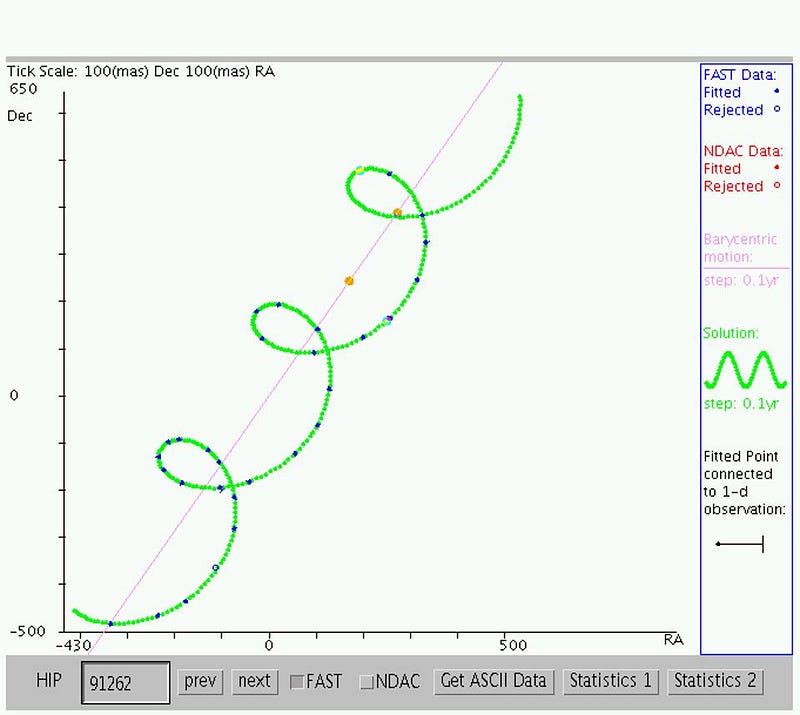
Over a period of three years, Hipparcos taught us a great deal about the motion of stars in our Milky Way, which is a combination of parallax and a series of true proper motions. The way to overcome these constraints is to take continuous measurements of stars as the Earth moves around the Sun and the Sun moves through space, with clearly identified, bright, distant “reference stars” which won’t show any discernible parallax. If you heard about the ESA’s Gaia mission, this is exactly what it’s attempting to do. With much greater accuracy and precision than Hipparcos, Gaia is undertaking an all-sky survey of the galaxy to measure the positions and motions of approximately 1 billion stars within the Milky Way.
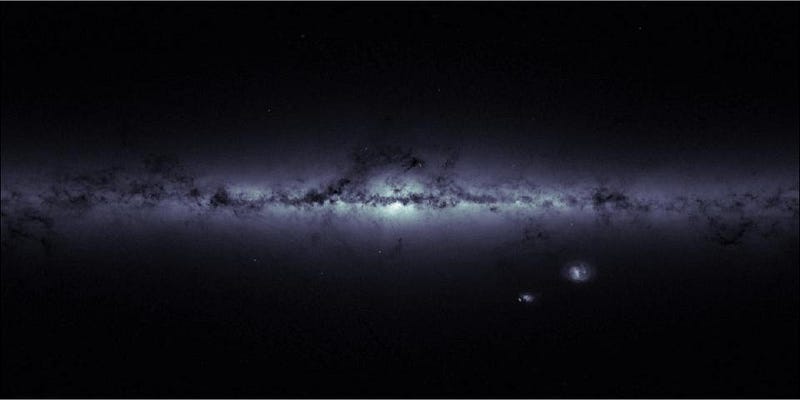
Parallaxes should be available for hundreds of millions of these stars, with a precision of just 10 µas (0.00001 arcsec) at maximum. We should be able to get significantly better than 1% precision for all of the Hipparcos stars, and — at last — should get outstanding parallax measurements for the closest Cepheid variable stars: Polaris and Delta Cephei. If we can understand the distances to this type of variable star within our own galaxy, we should be able to much better constrain our measurements of the cosmic distance ladder, and therefore, better understand how the Universe has expanded over its history and what makes it up.

It’s a bold, ambitious plan, and after hundreds of years of uncertainty in the distances to the stars, we’ll finally have the answer. By the year 2020, when Gaia’s data catalog is complete, we should know whether our various methods of measuring extragalactic distances have flaws or tensions, or whether all the pieces fall into place. We might not know exactly how far away the stars are today, but thanks to our greatest space observatories, we’re finally about to find out!
This post first appeared at Forbes, and is brought to you ad-free by our Patreon supporters. Comment on our forum, & buy our first book: Beyond The Galaxy!


